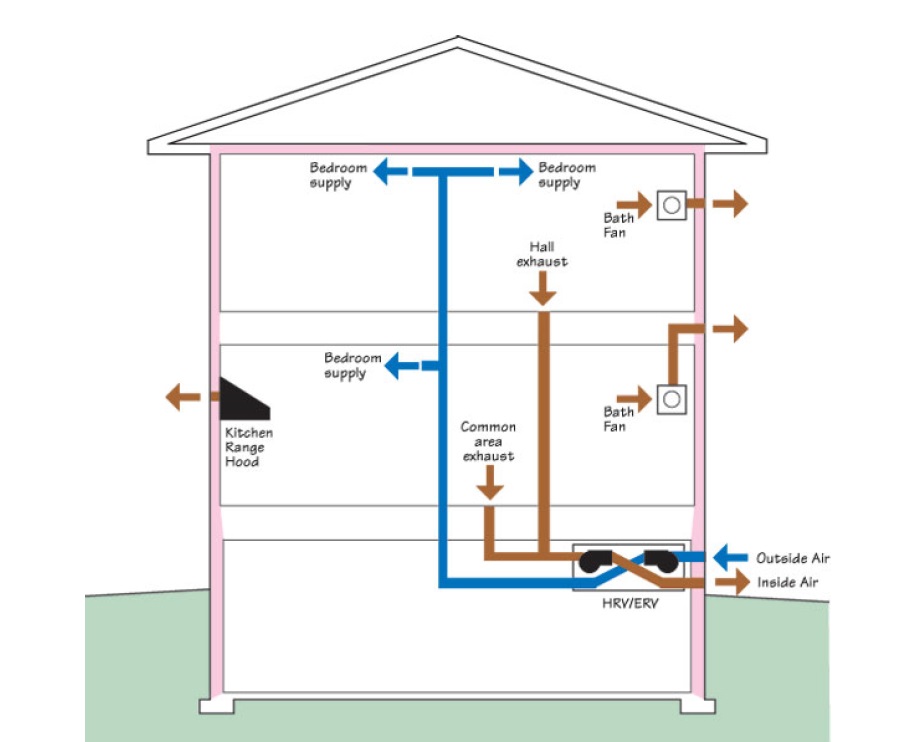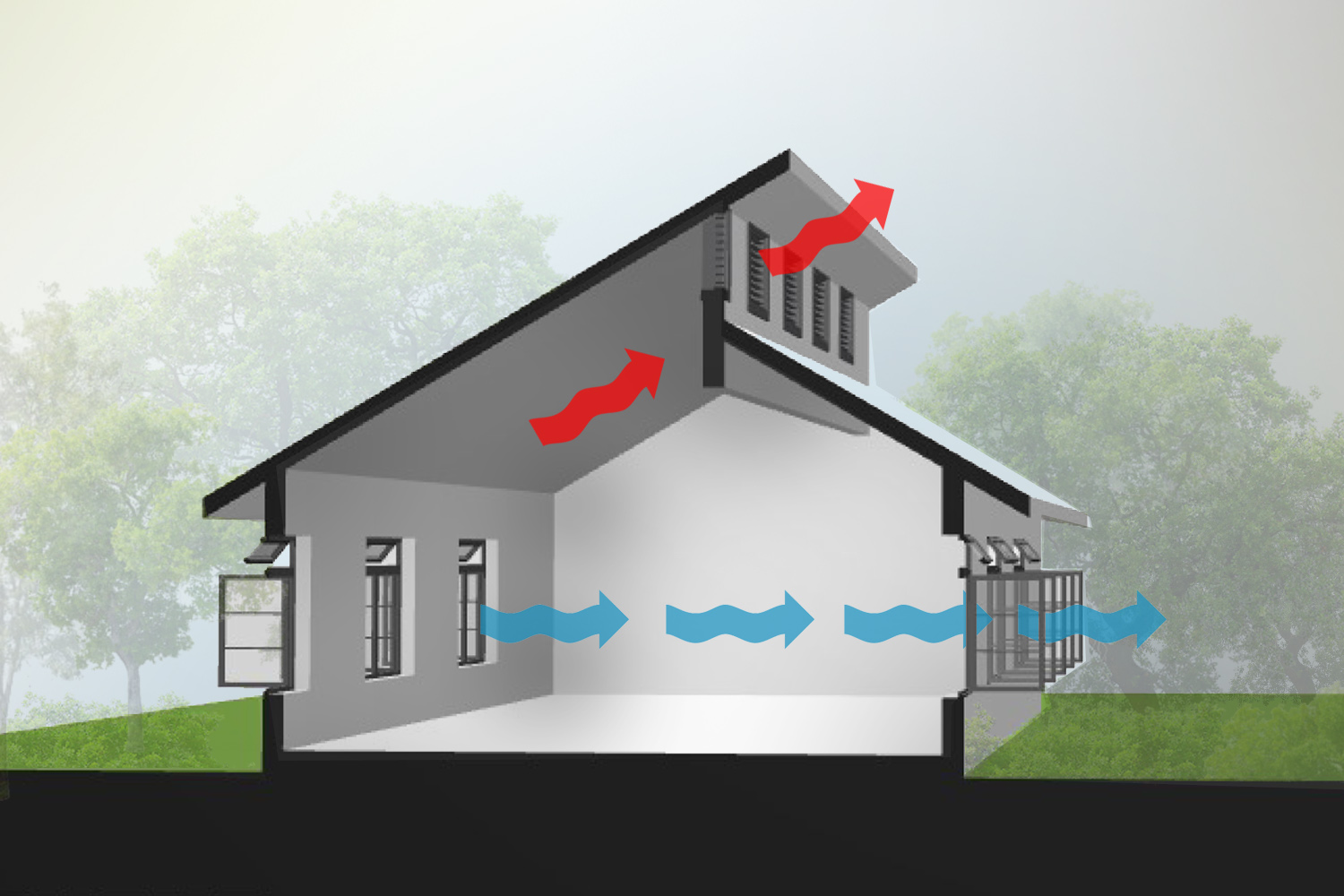Home Ventilation Melbourne Explained: Natural vs Mechanical Options
Recognizing the Value of Home Ventilation for a Healthier Living Setting
Home ventilation plays a necessary role in preserving a healthy living setting. It assists in the exchange of outdoor and interior air, which is essential for enhancing air high quality. Without appropriate air flow, homes can become reproducing grounds for contaminants and allergens. The effects of inadequate air flow can be substantial. This raises the inquiry of how property owners can efficiently execute air flow approaches to safeguard their wellness and wellness. Recognizing these approaches is imperative.

The Essentials of Home Air Flow
Home air flow acts as a necessary element of indoor air quality and comfort. It includes the process of exchanging stagnant interior air with fresh outside air, therefore lowering moisture and managing temperature. Correct ventilation systems can consist of all-natural approaches, such as open home windows and vents, along with mechanical systems, such as exhaust followers and air exchangers. Effective home air flow assists stop problems like interior mold growth and the buildup of hazardous bits. It additionally improves overall power performance, as well-ventilated spaces can preserve comfortable temperatures with much less reliance on home heating and cooling systems. Comprehending the basics of home ventilation is important for homeowners seeking to produce a healthier living atmosphere for themselves and their families.

Common Resources of Indoor Air Contamination

Although numerous might not recognize it, interior air contamination can originate from various resources within a family. Common contributors include volatile organic compounds (VOCs) emitted from paints, solvents, and cleansing items. Family appliances, such as gas cooktops and fireplaces, can release harmful gases like carbon monoxide gas and nitrogen dioxide. Furthermore, mold and mildew and mold grow in wet areas, launching spores that influence air high quality. Pet dander, dust termites, and plant pollen can accumulate inside your home, additional aggravating air pollution degrees. Smoking cigarettes inside your home generates hazardous chemicals that stick around airborne. Building products, including asbestos and formaldehyde, can off-gas harmful compounds. Acknowledging these resources is crucial for maintaining a healthier interior atmosphere and promoting reliable air flow approaches.
Health And Wellness Effects of Poor Air Flow
Interior air pollution can have substantial health effects, especially when air flow is poor. Poor air flow can cause the build-up of dangerous pollutants, such as volatile organic substances, mold and mildew, and particle issue. This accumulation might lead to respiratory issues, including bronchial asthma, allergic reactions, and chronic obstructive pulmonary disease. People may experience signs and symptoms like headaches, exhaustion, and irritability of the eyes, nose, and throat. At risk populations, such as kids and the elderly, go to greater risk for severe health effects. Long-lasting direct exposure to inadequately aerated environments can additionally contribute to a lot more serious problems, including cardiovascular diseases. As a result, making certain appropriate ventilation is necessary for keeping a healthy and balanced living setting and lowering the danger of health issues related to interior air pollution.
Effective Ventilation Methods for Your Home
Appropriate air flow is vital for maintaining a healthy and balanced indoor atmosphere, and applying efficient strategies can considerably enhance air high quality. House owners can begin by making certain that exhaust followers are set up in washrooms and kitchen areas to get rid of excess dampness and smells. Opening windows on a regular basis allows fresh air to flow, especially during light weather condition. Furthermore, using air purifiers with HEPA filters can help record airborne toxins. For homes with heating and cooling down systems, keeping heating and cooling systems and altering filters on a regular basis is essential for peak efficiency. Including all-natural air flow methods, such as cross-ventilation, can also improve air flow. Securing any type of leaks in home windows and doors avoids unwanted drafts, which can disrupt controlled air flow, ultimately leading to improved interior air top quality and comfort.
Preserving Optimal Air Quality Year-Round
To preserve perfect air quality year-round, homeowners have to embrace a positive approach to managing their interior atmosphere. On a regular basis keeping an eye on interior air top quality is crucial; this consists of checking for pollutants such as dirt, mold, and volatile organic compounds (VOCs) Executing efficient air flow systems, such as exhaust followers and air cleansers, can greatly reduce air-borne pollutants. In addition, routine upkeep of heating and cooling systems warranties peak efficiency and air flow. Homeowners must additionally consider humidity degrees, as extreme moisture can result in mold growth. Seasonal changes might necessitate changes in ventilation methods to accommodate varying outdoor air quality. By prioritizing these practices, house owners can create a healthier living space, promoting total health Home Ventilation Melbourne for all residents throughout the year.
Frequently Asked Questions
Exactly How Can I Inform if My Home Requirements Much Better Ventilation?
To identify if a home calls for much better air flow, one need to observe indications such as consistent humidity, mold development, mildewy smells, condensation on home windows, or boosted allergic reaction symptoms, showing inadequate air movement and potentially inadequate indoor air high quality.
What Are the Indications of Poor Indoor Air High Quality?

Can Houseplants Improve Indoor Air High Quality Effectively?
The efficiency of houseplants in enhancing indoor air quality is disputed. While some research studies recommend they can take in toxins and create oxygen, their general impact may be marginal compared to proper ventilation and air purification systems.
Exactly how Frequently Should I Change My Air Filters?
The regularity of air filter changes typically depends on use and filter type. Generally, it is advised to change filters every three months, though families with allergic reactions or animals might need even more constant modifications for optimal efficiency.
Are There Any Particular Air Flow Systems for Allergic Reaction Sufferers?
Lots of air flow systems, such as HEPA-filtered systems, properly reduce irritants in the air. Home Ventilation Melbourne. These systems trap pollen, dust, and pet dog dander, offering allergic reaction patients with a cleaner, much healthier indoor setting while managing air quality efficiently
It facilitates the exchange of indoor and outdoor air, which is vital for boosting air top quality. Home ventilation serves as a vital part of interior air top quality and comfort. It includes the process of exchanging stagnant indoor air with fresh outside air, thereby decreasing moisture and controlling temperature. Interior air pollution can have substantial wellness ramifications, especially when air flow is insufficient. Proper air flow is crucial for maintaining a healthy and balanced indoor environment, and implementing efficient methods can significantly boost air top quality.